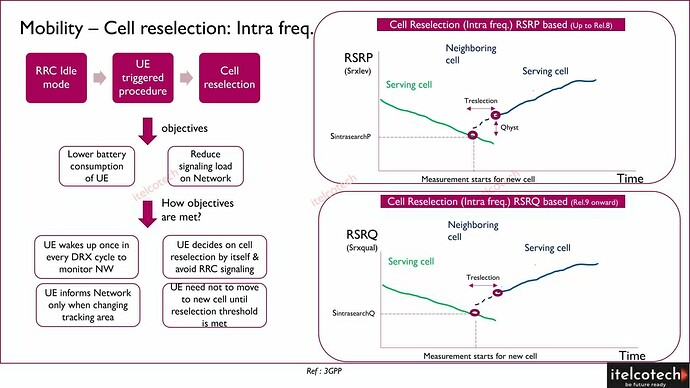In RRC_IDLE, mobility for the UE in the network is a mobile-triggered procedure known as cell reselection.
In RRC Idle, UE wakes up once every discontinuous reception cycle, in the same subframes that it is already monitoring for paging messages. UE uses those subframes to measure the reference signal received power (RSRP) from the serving cell. If the RSRP is high enough (greater than threshold set for Sintrasearch), then the UE will continue camping on that serving cell and do not measure any neighboring cells.
This technique minimizes the number of measurements that the mobile performs and the time for which it is awake, so maximizes its battery life.
After Release 8, cell reselection based on quality (RSRQ) is also added and associated thresholds (SintrasearchQ) needs to be defined in the network.
Along with the RSRP/RSRQ thresholds, Treselection (cell reselection timer) parameter is also defined. It allows averaging of the target cell quality before cell reselection is performed and avoids ping-pong.
The Qhyst parameter provides the hysteresis value in dB for ranking criteria in the cell reselection procedure. The parameter is also used to minimize pingpong.
Once serving cell signal strength/quality goes below thresholds (SintrasearchP/Q), UE starts searching for the better cell and once neighbouring cell with better strength/quality detected and remains better for the time (Treselection), then neighbouring cell becomes serving cell considering the hysteresis value, if defined.
LinkedIn: ![]()
